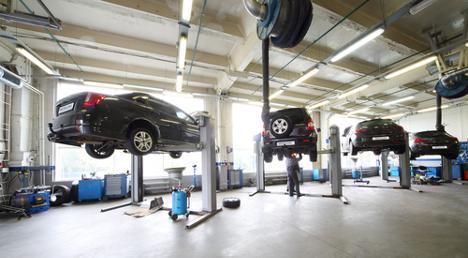5 tips for dealers to cut down on recon time

By subscribing, you agree to receive communications from Auto Remarketing and our partners in accordance with our Privacy Policy. We may share your information with select partners and sponsors who may contact you about their products and services. You may unsubscribe at any time.
PALO ALTO, Calif. –
Your buyer has scoured the auctions for quality pre-owned vehicles — both in-lane and online — and your dealership now has a great stock of used inventory.
Well, almost; the cars still have to make it through reconditioning to be front-line ready, and any dealer knows this can be time consuming. And of course, this can cut potentially cut into your gross profit.
In light of that, Dennis McGinn, chief executive officer of reconditioning workflow software company Rapid Recon, offered five tips for dealers to cut down on recon time, ranging from speeding up repair approvals to structuring phase times and more.
McGinn explained a productive recon department “runs like an assembly line, using defined processes, timed steps and streamlined communications to produce more output, eliminate waste, and get buyers looking at cars online and on the lot five to 10 days sooner.”
And according to data from NCM Associates, cutting even five days on from this process can improve gross profit. Taking a look at the numbers, if a dealers average recon cycle is eight to 10 days, reducing it to a five-day cycle adds $96 to $160 in gross margin per vehicle retailed, according to NCM.
“Holding costs erode used-car margins, so a faster time to market means more profitable used-car operations,” McGinn added.
Subscribe to Auto Remarketing to stay informed and stay ahead.
By subscribing, you agree to receive communications from Auto Remarketing and our partners in accordance with our Privacy Policy. We may share your information with select partners and sponsors who may contact you about their products and services. You may unsubscribe at any time.
The CEO offered these five tips to help used car and fixed operations managers work together more productively and shorten time-to-market:
- Speed repair approvals: Improving communication between recon and the used car manager can reduce bottlenecks. Inability to get a work order approved by the used car manager can delay start of work from a few minutes to a few hours or more.
- Set spend preapprovals: Giving recon some level of authority to proceed with needed work without used car manager approval can keep work flowing uninterrupted. Consider assigning repair dollar “buckets” for vehicles of varying mileage – low, medium, high – based on the mileage and repair averages of the vehicles you recon.
- Structure phase times: Set a time frame for accomplishing specific types of work. Vary times based on the condition of the vehicle. Monitor times and hold staff accountable for adhering to them.
- Compensate for vehicle completion time, not per vehicle: Focus compensation on a production-based measurement. A specified completion time window per vehicle will stimulate parties involved to work smarter and harder to move units through recon in fewer days. Consider spiffs for meeting goals; when considering spiffs, remember the larger picture – reducing holding costs, and turns that improve gross.
- Equip for quality and manage by clock: Make no allowance for less quality work, but beware of tendencies to over-condition. The additional recon cost is rarely recouped and often contributes little to the vehicle’s sales-ability. Pay attention to visuals such as dings and dents, scuffed wheels, glass and other elements that attract buyers’ notice before any mechanical issues might.


